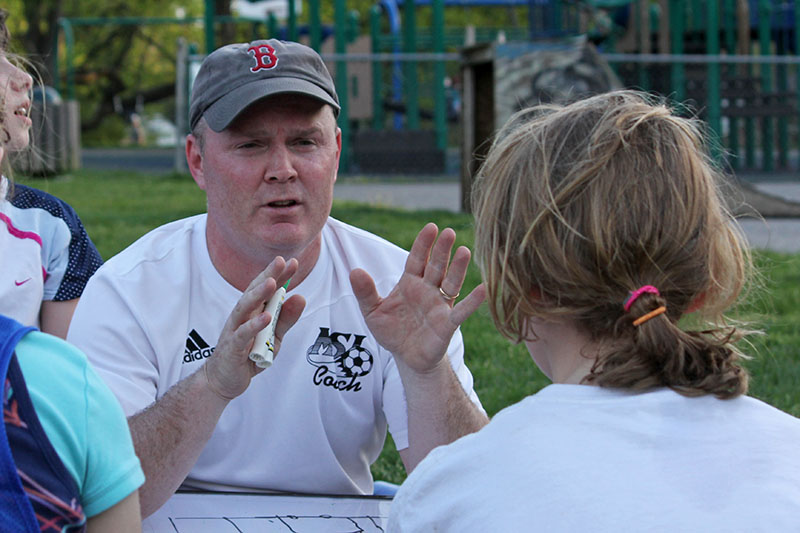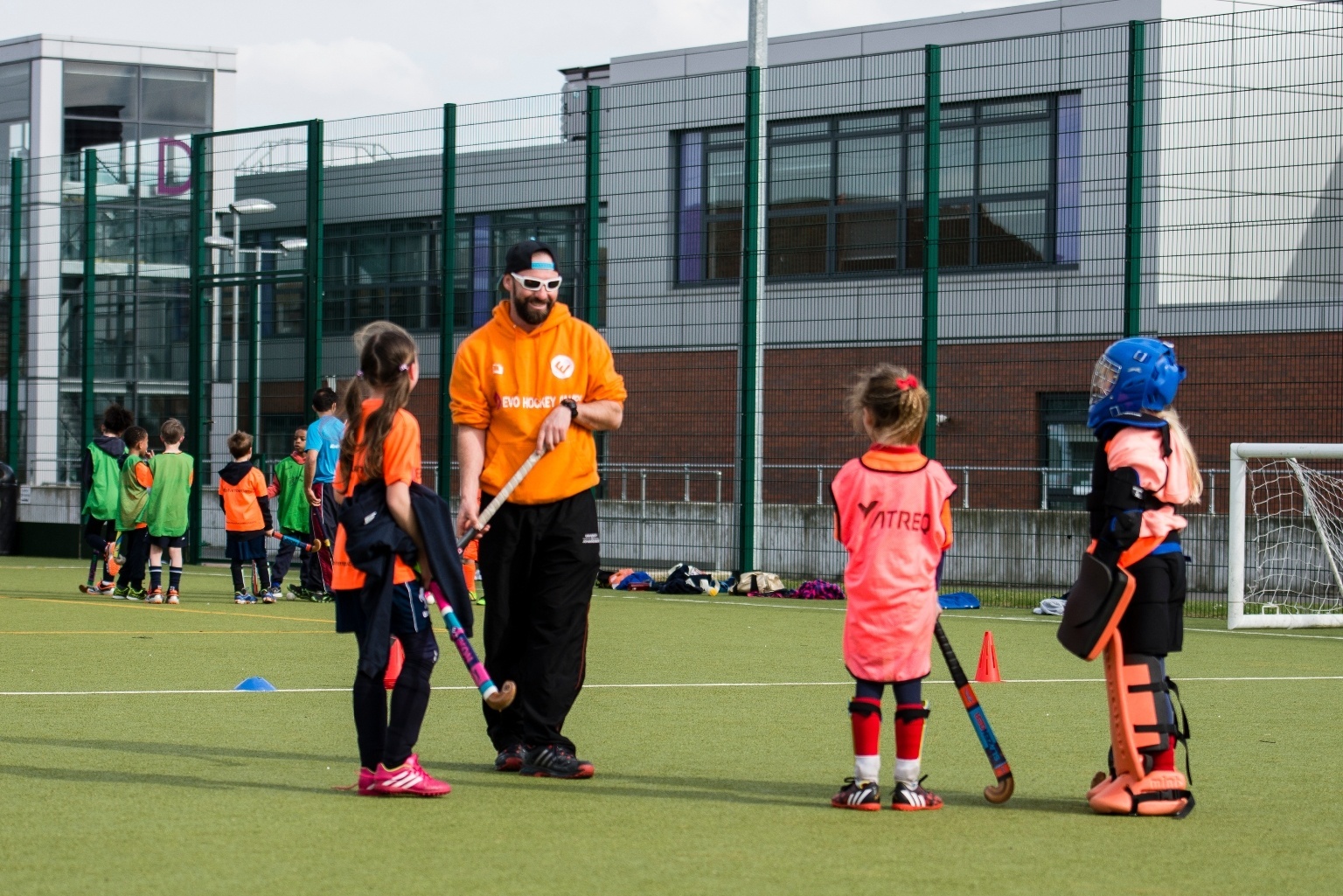Think about when you have coached a young player and thought that they were low on confidence. What did you observe? What did you hear? What did you as the coach think? What do you think a confident player looks like?
Confidence has long been recognised as an important psychological quality in sports such as football, rugby and hockey. Much more attention is now being paid to how coaches can help develop confidence in players from a young age.What is confidence?
Confidence is a player’s belief that they can execute a skill or produce a training or game-related outcome for either themselves or the team. It is something that can affect the rate at which a player progresses in their technical and tactical development, their level of enjoyment in sport and their chances of dropping out of sport.
A confident player is one who has more than just the technical and tactical skills required to play sport well; they are also willing to use them and take risks without fearing what might go wrong. There are many factors that can influence a player’s confidence: the form of themselves, team-mates, or the opposition; recent injuries; the score during a game; recent, long-term, or recurring injuries; and the type of goals that are set.

A player’s confidence levels can change during in-game or in-training events and a challenge for coaches is how they can best notice the signs of high or low confidence and how they can support players to develop optimal levels of confidence.
How do I know if a player is confident?
Confident players will display a number of behaviours:
- Wanting (calling for or signalling for) the ball, even if they are under pressure from opposition or if it is during a difficult period during the game.
- Working hard to keep their own and the team’s spirits up, regardless of the game circumstances (e.g. positive communication with coaches and team-mates, having a spring in their step for the full game).
- Trying new things and take reasonable risks in a variety of different situations, without being worried about making mistakes or being defeatist if things go wrong.
As a coach, you have a really important role in helping players to learn to display these behaviours. Let’s not forget, confidence is something that can be coached, learned, taught and developed. Therefore, understanding how to develop confidence will ultimately help coaches to empower players to take more control over their sport as well as enhancing their enjoyment.
How can I enhance a player’s confidence?
Often, the strongest sources of sport confidence are sport-related accomplishments. This is a really important consideration for coaches because players, particularly younger players or those new to sport, often find it difficult to self-praise.
Consequently a coach highlighting recent sport-related accomplishments, no matter how small, can help to enhance a player’s confidence. This is particularly important to remember if the player or team is going through any drops in form as it might be that there are only small accomplishments that can be highlighted.

A key part of this is helping the player to understand that the effort they've put in to creating this accomplishment was an important part of the process, as this will help the player to develop a sense of control over their achievements which can increase the likelihood of them being confident and motivated to improve further.
If you have the facility to do so, using video footage of players achieving these successes (e.g. performing a new skill in a game situation) can help the player to internalise the achievement as well as create a stronger picture of what they did successfully and how they achieved it. Another way that you can help players to experience performance accomplishments is by structuring practices so they have plenty of time to reinforce their learning and success before moving on.
Allowing players to repeatedly and successfully perform skills, techniques or tactics will increase their confidence in performing these in game situations.
The next strongest source of sport confidence is seeing other players of a similar age, stature or ability performing different skills, techniques or tactics. Whilst it is important to avoid negative social comparisons and belittling players for not being able to perform in a way that a team-mate can, using other players as role models can help to create a sense of what is possible for players who are low in confidence.
If you want to avoid using team-mates as these role models (don’t worry – many coaches are uncomfortable doing this) you could use videos of professional or elite players performing different skills to inspire young players to aspire to a higher level.
Finding out who your players’ favourite athletes are can help with this, as you can then direct them to different videos of skills or game situations and then congratulate them on their effort for trying to replicate these skills.
A key point here is congratulating them on their effort - remember how feeding back on the small accomplishments can help build confidence.

Even after experiencing the above, a player may still lack some of the confidence. As a coach you are likely to be the strongest influence on a player’s development and, as a result, may be best positioned to use different forms of verbal persuasion to develop a player’s confidence.
Using small statements that communicate that you believe in a player, that they have what it takes to play well and which highlight where a player’s or team’s particular strengths are, can all help to improve confidence.
A final key method of enhancing confidence is to create a climate of confidence where team-mates support, highlight and embrace each-others’ achievements. Players offering praise and positive, motivating comments to their teammates can help to create a collectively more positive and confident attitude within the team.
Little things such as teammates not belittling other players when things go wrong can help to create a climate of risk-taking and no fear which is an important part of developing confidence and improving players.
Build confidence in everyday coaching
As a coach, you can integrate these techniques into your coaching sessions and use them as parts of your ‘normal’ coaching to enhance confidence in players. In doing so, players are likely to feel more empowered to take control of their development as well as enjoy their time more in sport.
Consequently, the chances of a player trying the game-changing pass, attempting to beat their opposing player instead of playing safe, attempting a difficult shot, or taking responsibility for shooting when they get the chance, all increase.
For more on the coaching in youth football, I recommend Coaching Psychological Skills in Youth Football: Developing the 5Cs.
It contains information on how coaches can integrate and progress the ‘5Cs’ (communication, concentration, control, confidence, commitment) during their coaching sessions and includes sample session plans for each (and is available here).
Adam Gledhill is a Senior Lecturer at Leeds Beckett University and Head of Psychosocial Development at a Football Association Licensed Tier 1 Regional Talent Club.
He recently completed his PhD at Loughborough University where he investigated the role of psychosocial factors in talent development in female youth football players.
